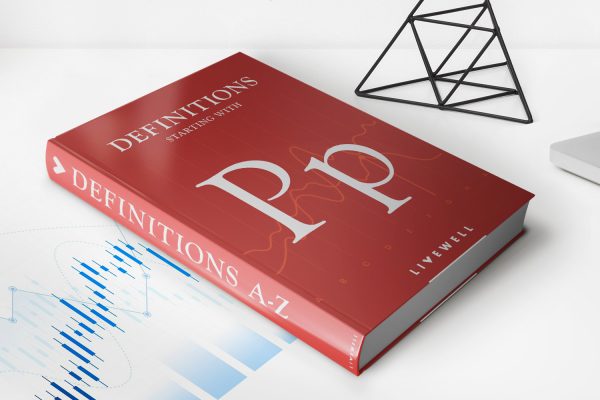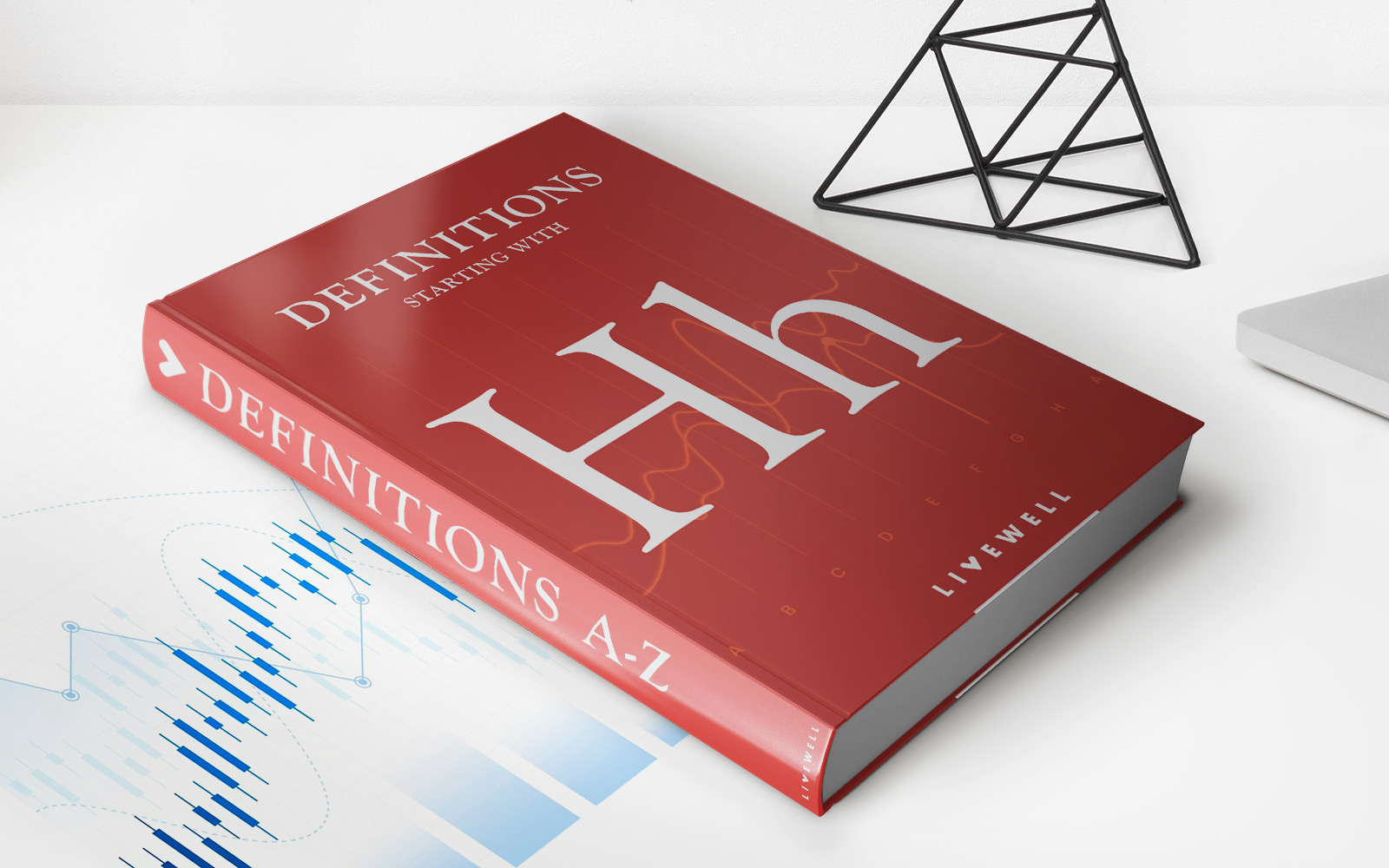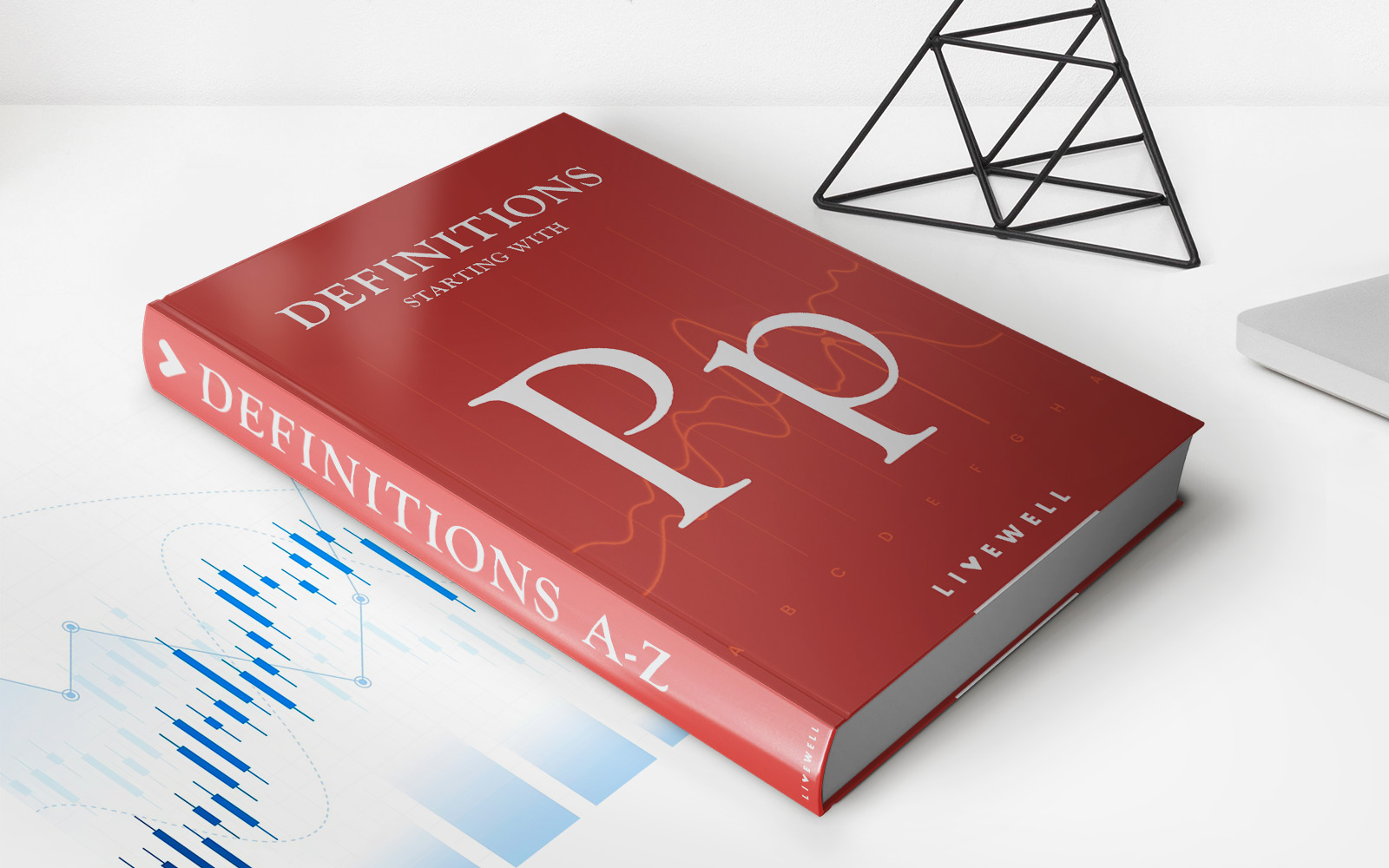

Finance
What Is Portable Life Insurance
Published: November 21, 2023
Looking for portable life insurance? Learn about the benefits and options available to you in the world of finance.
(Many of the links in this article redirect to a specific reviewed product. Your purchase of these products through affiliate links helps to generate commission for LiveWell, at no extra cost. Learn more)
Table of Contents
- Introduction
- Definition of Portable Life Insurance
- Benefits of Portable Life Insurance
- Factors to Consider when Choosing Portable Life Insurance
- How Portable Life Insurance Works
- Types of Portable Life Insurance Policies
- Pros and Cons of Portable Life Insurance
- How to Apply for Portable Life Insurance
- Frequently Asked Questions about Portable Life Insurance
- Conclusion
Introduction
Welcome to the world of portable life insurance! In these uncertain times, having a reliable life insurance policy is essential for protecting your loved ones and ensuring their financial security in the event of your untimely passing. But what exactly is portable life insurance and why should you consider it?
Portable life insurance, as the name suggests, is a type of policy that can be carried with you wherever you go. Unlike traditional life insurance policies that are tied to a specific employer or location, portable life insurance gives you the flexibility to maintain coverage even when you change jobs or move to a different area. This can be highly advantageous in today’s dynamic and fast-paced world.
The main appeal of portable life insurance lies in its ability to provide continuity of coverage in the face of life’s many transitions. Whether you decide to switch careers, start your own business, or relocate to a new city, you can rest easy knowing that your life insurance policy remains intact. It’s a valuable safety net that ensures your loved ones will receive the financial support they need, regardless of the changes happening in your life.
However, it’s important to note that portable life insurance is not just for those on the move. Even if you have no intentions of changing jobs or moving, having a portable life insurance policy can still offer numerous benefits and added peace of mind. The ability to maintain your coverage in the face of unforeseen circumstances can be a huge relief, especially during challenging times.
In the following sections, we will delve deeper into what portable life insurance entails, its benefits, the factors to consider when choosing a policy, how it works, the different types of policies available, and the pros and cons you should be aware of. We will also provide guidance on how to apply for portable life insurance and address some frequently asked questions to help you make an informed decision.
So join us as we embark on this journey to uncover the world of portable life insurance and discover how it can safeguard your family’s future.
Definition of Portable Life Insurance
Portable life insurance is a type of life insurance policy that allows policyholders to maintain coverage even when they change jobs or move to a different location. Unlike traditional life insurance policies, which are typically tied to a specific employer or geographic location, portable life insurance provides flexibility and continuity of coverage.
With portable life insurance, you have the freedom to take your policy with you wherever life takes you. This means that if you switch jobs, your life insurance policy remains intact, ensuring that you and your loved ones are protected. Similarly, if you decide to relocate to a different city or state, your coverage will go with you, providing peace of mind and security.
Portable life insurance is designed to adapt to the modern workforce dynamics, where individuals may change jobs multiple times throughout their careers or engage in freelance and gig work. It recognizes that your life insurance needs can evolve over time and aims to provide a seamless transition between different stages of your life.
With this type of insurance, the policy is owned by the individual and is not tied to any particular employer or group. This means that you have control over your policy and can make changes, such as adjusting the coverage amount or adding riders, to suit your changing circumstances. It provides a level of independence and flexibility that traditional employer-sponsored life insurance policies may not offer.
The portability of the policy also means that you can continue to enjoy the benefits of your life insurance coverage, even if you are in between jobs or facing a career transition. This can be particularly valuable during these times, when having financial security and protection for your family is of utmost importance.
It’s important to note that portable life insurance is not a separate type of insurance policy, but rather a feature or option offered by certain insurers. It can be available with different types of life insurance, including term life insurance and permanent life insurance, such as whole life or universal life insurance.
In the next sections, we will explore the benefits of portable life insurance, factors to consider when choosing a policy, how portable life insurance works, the various types of policies available, and the pros and cons you should be aware of. So, let’s dive deeper into the world of portable life insurance to understand its significance and advantages.
Benefits of Portable Life Insurance
Portable life insurance offers several key benefits that make it an attractive option for individuals and families. Let’s explore some of the advantages of choosing a portable life insurance policy:
1. Continuity of Coverage: One of the primary benefits of portable life insurance is the ability to maintain coverage even during job changes or relocations. You won’t have to worry about gaps in your life insurance protection, ensuring that your loved ones are financially safeguarded.
2. Flexibility: Portable life insurance provides flexibility in terms of coverage amounts and policy options. You can tailor your policy to align with your changing needs, whether you want to increase or decrease coverage or add additional benefits like disability or critical illness riders.
3. Independence from Employers: Unlike employer-sponsored life insurance, portable life insurance is not tied to a specific employer or group. You own the policy, which means you have control over it and can keep it even if you change jobs, decide to become self-employed, or start your own business.
4. Portability: As the name suggests, portable life insurance is portable. It moves with you wherever you go, whether that’s to a new job, a different city, or even a new country. This can be especially beneficial for individuals who have frequent job changes or who live a more nomadic lifestyle.
5. Stability and Security: By having a portable life insurance policy in place, you provide a sense of stability and security for your loved ones. They can rely on the financial protection the policy offers, knowing that they will have the means to cover expenses and maintain their standard of living in the event of your untimely passing.
6. Tax Advantages: Portable life insurance policies can provide potential tax advantages. The death benefit is generally paid out tax-free to beneficiaries, and any cash value growth within permanent policies is tax-deferred, meaning you don’t have to pay taxes on the growth until you withdraw the funds.
7. Peace of Mind: Perhaps the most significant benefit of portable life insurance is the peace of mind it brings. Knowing that you have a reliable and flexible policy that adapts to your changing circumstances can alleviate stress and give you and your loved ones the assurance that their financial future is protected.
It’s important to consider these benefits in relation to your specific needs and goals. Portable life insurance isn’t the right choice for everyone, but for those who value flexibility, independence, and continuity of coverage, it can be an excellent option to consider.
In the next section, we will explore the important factors to consider when choosing a portable life insurance policy.
Factors to Consider when Choosing Portable Life Insurance
When selecting a portable life insurance policy, it’s crucial to carefully evaluate various factors to ensure you make an informed decision. Here are some key considerations to keep in mind:
1. Coverage Amount: Assess your current and future financial obligations to determine the appropriate coverage amount. Consider factors such as outstanding debts, mortgage or rent payments, education expenses for your children, and the financial support your family would require if you were no longer there to provide for them.
2. Policy Type: Portable life insurance comes in different types, including term life insurance and permanent life insurance (such as whole life, universal life, or variable life). Understand the features and benefits of each policy type, and choose one that aligns with your long-term goals and financial needs.
3. Flexibility of the Policy: Evaluate the flexibility of the policy. Can you adjust the coverage amount or add riders to customize the policy to your changing needs? Having a policy that allows you to make changes as your circumstances evolve can be advantageous.
4. Financial Stability of the Insurance Company: Research the financial stability and reputation of the insurance company. Look for companies with strong financial ratings and a history of reliable customer service. You want to choose an insurer that will be there for your loved ones when the time comes to file a claim.
5. Premiums and Payment Options: Consider the affordability of the premiums and the available payment options. Can you comfortably fit the premium payments into your budget? Additionally, examine whether the insurance company offers different payment frequencies (monthly, quarterly, annually) to match your financial preferences.
6. Conversion Options: If you opt for a term life insurance policy, check if it offers conversion options. Conversion allows you to convert a term policy into a permanent policy without undergoing additional underwriting. This can be beneficial if your needs change or if you want to extend your coverage beyond the initial term.
7. Additional Benefits and Riders: Explore the optional benefits and riders available with the policy. These may include critical illness coverage, disability income protection, or accelerated death benefit riders. Assess whether these extras align with your specific needs and if they come at an additional cost.
8. Underwriting Process: Understand the underwriting process of the insurance company. Some insurers may have stricter underwriting criteria, while others offer simplified or no-exam policies. Consider your own health and lifestyle factors and choose a policy that suits your circumstances.
9. Customer Reviews and Reputation: Read customer reviews and seek recommendations from trusted sources. Learn about others’ experiences with the insurance company and their satisfaction with the claims process. A company with positive customer feedback can provide added confidence in your decision.
10. Professional Advice: If you feel overwhelmed or uncertain about choosing portable life insurance, consult with a licensed insurance agent or financial advisor. They can provide personalized guidance based on your specific needs and help you navigate the options available.
By carefully considering these factors, you can select a portable life insurance policy that aligns with your financial goals, offers the desired flexibility, and provides essential protection for your loved ones.
In the following sections, we will explore how portable life insurance works, the different types of policies available, and the pros and cons to help you gain a deeper understanding of this insurance option.
How Portable Life Insurance Works
Portable life insurance works by providing seamless coverage that moves with you throughout your life’s transitions. Here’s a closer look at how it operates:
1. Purchase a Policy: You begin by purchasing a portable life insurance policy from an insurance company of your choice. You can explore different insurers and policy types to find the one that best suits your needs and budget.
2. Designate Beneficiaries: When purchasing the policy, you will need to designate one or more beneficiaries who will receive the death benefit in the event of your passing. This can be a spouse, children, or any other individuals you wish to provide financial support to.
3. Pay Regular Premiums: With portable life insurance, you will need to make regular premium payments to keep the policy active. Premiums can usually be paid on a monthly, quarterly, or annual basis, depending on your preference and the options offered by the insurance company.
4. Enjoy Continuous Coverage: As long as you continue to pay your premiums, your portable life insurance policy will remain in effect. This means that even if you change jobs or move to a new location, your coverage will stay intact without interruption.
5. Keep the Policy Updated: Over time, your life circumstances may change, and you may need to modify your coverage. Portable life insurance policies often offer the flexibility to adjust the coverage amount or add optional riders as needed. This allows you to tailor the policy to your evolving financial needs.
6. Review and Renew: Periodically review your portable life insurance policy to ensure it still meets your needs. You may want to reassess your coverage amount, beneficiary designations, and any additional benefits you require. Some policies may require renewal after a certain term, while others remain in force as long as premiums are paid.
7. File a Claim: In the unfortunate event of your passing, your designated beneficiaries must notify the insurance company and submit a claim. The insurance company will then assess the claim and, if approved, provide the death benefit to the beneficiaries as specified in the policy.
Remember, portable life insurance gives you the freedom and flexibility to maintain coverage regardless of job changes or relocations. It provides a seamless transition between different stages of your life, ensuring that you can provide for your loved ones even during uncertain times.
In the following sections, we will explore the various types of portable life insurance policies available and discuss the pros and cons to help you make an informed decision about your coverage.
Types of Portable Life Insurance Policies
Portable life insurance comes in various types, each offering different features and benefits. Here are the common types of portable life insurance policies:
1. Term Life Insurance: Term life insurance provides coverage for a specific term, typically ranging from 10 to 30 years. It offers a death benefit if the policyholder passes away during the term. Term policies are often portable, allowing you to maintain coverage even if you change jobs or relocate. However, they do not accumulate any cash value over time.
2. Permanent Life Insurance: Permanent life insurance, such as whole life, universal life, or variable life insurance, provides coverage for your entire lifetime. These policies include a death benefit and can accumulate cash value over time. Permanent life insurance is typically more expensive than term life insurance but offers lifelong coverage and potential cash value growth.
3. Group Life Insurance: Group life insurance is often offered through employers or professional organizations. While it may not initially be portable, some group policies allow conversion to an individual policy upon leaving the group. It’s essential to check if conversion options are available and the terms and conditions associated with them.
4. No-Exam Life Insurance: No-exam life insurance policies, also known as simplified issue or guaranteed issue policies, allow you to secure coverage without undergoing a medical exam. These policies can be an attractive option if you have pre-existing health conditions or prefer to skip the medical underwriting process. However, they may come with higher premiums or lower coverage amounts compared to fully underwritten policies.
5. Convertible Life Insurance: Convertible life insurance policies, often associated with term life insurance, allow you to convert your policy into a permanent life insurance policy without undergoing additional medical exams. This flexibility can be particularly valuable if your needs change, and you want to extend your coverage beyond the initial term of the policy.
6. Survivorship Life Insurance: Survivorship life insurance, also known as second-to-die insurance, covers two individuals, typically a married couple. The death benefit is paid out upon the passing of the second insured person. Survivorship life insurance can be a valuable estate planning tool and provide financial security for loved ones inheritance or estate tax needs.
When choosing a portable life insurance policy, assess your long-term goals, budgetary considerations, and coverage needs. Consider factors such as the premium affordability, coverage duration, cash value accumulation, and any additional benefits or riders that may be important to you.
It’s advisable to consult with a licensed insurance professional or financial advisor to understand the nuances of each policy type and how they align with your specific circumstances and goals.
In the next section, we will explore the pros and cons of portable life insurance to help you make an informed decision about your coverage.
Pros and Cons of Portable Life Insurance
Portable life insurance offers several advantages that make it an appealing choice for many individuals. However, it’s essential to consider both the pros and cons before making a decision. Let’s examine the pros and cons of portable life insurance:
Pros:
1. Continuity of Coverage: Portable life insurance provides continuity of coverage, allowing you to maintain protection even if you change jobs or move to a different location. This ensures that your loved ones are financially secure, regardless of life’s uncertainties.
2. Flexibility: With a portable policy, you have the flexibility to adjust your coverage as your needs change. You can increase or decrease the coverage amount, add optional riders, or make other modifications to customize the policy to suit your evolving circumstances.
3. Independence: Portable life insurance is not tied to an employer, giving you independence and control over your policy. You own the policy, so even if you leave your job or start your own business, you can keep your coverage without interruption.
4. Portability: The portability of the policy allows you to take it with you wherever you go. This is particularly beneficial for individuals who have frequent job changes, travel often, or lead a more nomadic lifestyle.
5. Stability: Portable life insurance provides stability and peace of mind for you and your loved ones. It ensures that your beneficiaries will receive the death benefit, enabling them to maintain their financial well-being and meet their future needs.
Cons:
1. Potential Cost: Portable life insurance policies can be more expensive compared to employer-sponsored group life insurance or term policies. However, the added cost can be justified by the benefits of continuity and flexibility.
2. Underwriting Requirements: Depending on the policy and the insurance company, portable life insurance may involve undergoing a medical exam or meeting certain health criteria during the underwriting process. This can be a drawback for individuals with pre-existing medical conditions.
3. Availability: Not all insurance companies offer portable life insurance options. You may need to research and compare policies from different providers to find the right portable policy that suits your needs.
4. Limited Conversion Options: While some portable life insurance policies offer conversion options, not all policies allow for easy conversion to permanent coverage. It’s crucial to review the terms and conditions regarding conversions if you anticipate a need for lifelong coverage in the future.
5. Policy Termination: In some cases, portable life insurance policies may be terminated if premiums are not paid within a certain period. This can result in a loss of coverage, so it’s important to stay informed about payment deadlines and ensure timely premium payments.
Considering these pros and cons will help you evaluate whether portable life insurance is the right choice for your specific situation. It’s advised to consult with an insurance professional or financial advisor who can provide guidance tailored to your needs and help you make a well-informed decision.
In the next section, we will discuss the process of applying for portable life insurance and provide answers to commonly asked questions about this type of coverage.
How to Apply for Portable Life Insurance
If you’ve decided that portable life insurance is the right choice for you, the application process is straightforward. Here’s a step-by-step guide on how to apply for portable life insurance:
1. Evaluate Your Needs: Assess your financial situation and determine the amount of coverage you need. Consider factors such as outstanding debts, future expenses, and the financial support your loved ones would require if you were no longer around.
2. Research Insurance Companies: Take the time to research and compare insurance companies that offer portable life insurance policies. Look for reputable providers with positive customer reviews, strong financial ratings, and policy options that suit your needs.
3. Get Multiple Quotes: Request quotes from multiple insurance companies to compare premiums, coverage, and policy features. This will help you find the most competitive rates and policies that align with your requirements.
4. Consult with an Insurance Professional: Consider consulting with a licensed insurance agent or financial advisor. They can provide expert guidance and help you navigate the complex world of insurance, ensuring you make an informed decision about your coverage needs.
5. Complete the Application: Once you have chosen an insurer and selected a policy, you will need to complete an application. The application will ask for personal information, such as your age, health history, lifestyle habits, and financial details. It’s crucial to provide accurate and truthful information to the best of your knowledge.
6. Undergo Medical Underwriting: Depending on the policy and insurer, you may need to undergo a medical exam or provide medical records as part of the underwriting process. This helps the insurance company assess your health risks and determine your insurability and premium rates.
7. Review the Policy: Carefully review the terms and conditions of the policy, including the coverage amount, premium amount, policy duration, and any additional riders or benefits that may be included. Ensure that the policy reflects your desired coverage and meets your expectations.
8. Sign the Policy: If you are satisfied with the policy terms, sign the insurance contract and submit any required paperwork or documentation. Make sure to retain a copy of the signed policy for your records.
9. Make Premium Payments: Once your policy is in effect, you will need to make regular premium payments to keep the coverage active. Determine the payment frequency (monthly, quarterly, annually) that works best for you and set up a payment method with the insurance company.
10. Communicate Changes: As your circumstances change over time, such as a change in address or updates to your beneficiary designation, inform your insurance company in a timely manner to ensure that your policy remains up to date.
By following these steps, you can successfully apply for portable life insurance and secure the coverage you need to protect your loved ones’ financial future.
In the next section, we will address some commonly asked questions about portable life insurance to further enhance your understanding of this type of coverage.
Frequently Asked Questions about Portable Life Insurance
Here are some commonly asked questions regarding portable life insurance:
1. Is portable life insurance more expensive than other types of life insurance?
Portable life insurance policies may have slightly higher premiums compared to employer-sponsored group policies. However, the added cost is often justified by the flexibility and continuity of coverage that portable policies offer.
2. Can I have multiple portable life insurance policies?
Yes, it is possible to have multiple portable life insurance policies. However, you should consider your coverage needs and affordability before purchasing multiple policies. It’s important to ensure that the combined coverage amounts align with your financial objectives.
3. Can I convert my portable term life insurance policy into a permanent policy?
Some portable life insurance policies, especially term policies, offer conversion options. This allows you to convert your term policy into a permanent life insurance policy without undergoing additional underwriting. However, it’s essential to review the terms of your policy and understand the conversion options available.
4. What happens if I miss a premium payment?
If you miss a premium payment, there may be a grace period during which you can still make the payment without your policy lapsing. However, if the payment is not made within the grace period, the policy may terminate, and you will lose coverage. It’s important to stay current with your premium payments to ensure continuous coverage.
5. Can I change the coverage amount of my portable life insurance policy?
Many portable life insurance policies offer flexibility in adjusting the coverage amount. You may be able to increase or decrease the coverage as needed, depending on the policy and insurance company. It’s recommended to check the terms and conditions of your policy regarding coverage adjustments.
6. Can I take out a portable life insurance policy if I have pre-existing health conditions?
Portable life insurance policies typically require some form of underwriting, which may include a medical examination or review of medical records. While having pre-existing health conditions may affect your premium rates or insurability, some insurers offer policies tailored to individuals with specific health challenges. Consulting with an insurance professional can help you find the right coverage options.
7. Can I cancel my portable life insurance policy if I no longer need it?
Yes, you can cancel your portable life insurance policy if you no longer require coverage. However, it’s advisable to review the terms of your policy, as there may be penalties or surrender charges associated with cancellation. Additionally, consider discussing your decision with an insurance professional to assess the impacts and explore alternative solutions.
8. Can I add additional riders to my portable life insurance policy?
Many portable life insurance policies offer optional riders that can enhance your coverage. Riders such as critical illness, disability income, or accelerated death benefit riders can be added to customize your policy to better meet your specific needs. Discuss your options with your insurance company or agent to determine the riders available for your policy.
It’s important to note that specific details and provisions of portable life insurance policies can vary depending on the insurance company and the policy type. Consulting with an insurance professional or financial advisor is recommended to address any personal concerns or receive customized advice based on your unique circumstances.
In the concluding section, we will summarize the key points discussed and emphasize the importance of portable life insurance in securing your family’s financial future.
Conclusion
Portable life insurance offers essential benefits and flexibility to ensure the financial security of your loved ones, regardless of life’s uncertainties and transitions. With the ability to maintain coverage even when changing jobs or moving, portable life insurance provides peace of mind and continuity.
By researching and comparing policies from reputable insurance companies, you can find a portable life insurance policy that aligns with your coverage needs, budget, and long-term goals. The ability to customize your coverage, flexibility in adjusting the policy, and independence from employer-related policies are significant advantages of portable life insurance.
However, it’s important to consider the potential cost, underwriting requirements, and limitations of portable life insurance. Ensuring timely premium payments and keeping the policy updated as your circumstances change are crucial to maintaining continuous coverage.
Consulting with an insurance professional or financial advisor can provide valuable guidance throughout the process of choosing and applying for portable life insurance. They can help you navigate the various policy options, explain the nuances of each policy type, and ensure that the policy you select adequately protects your loved ones and aligns with your financial goals.
Ultimately, portable life insurance is a valuable tool for safeguarding your family’s financial future. It offers the flexibility and stability you need in an ever-changing world. By understanding the intricacies of portable life insurance and making informed decisions, you can provide the financial protection your loved ones deserve.
So don’t wait any longer – explore your options, get quotes, and take the necessary steps to secure your portable life insurance policy. By doing so, you can enjoy the peace of mind in knowing that your loved ones will be financially protected, no matter what life may bring.














